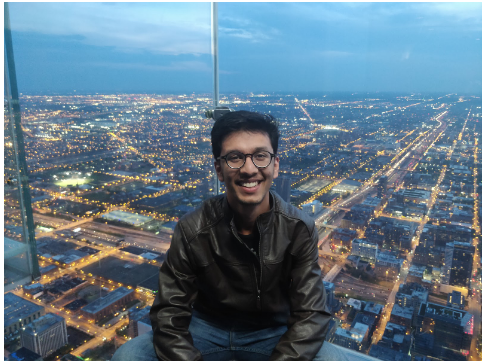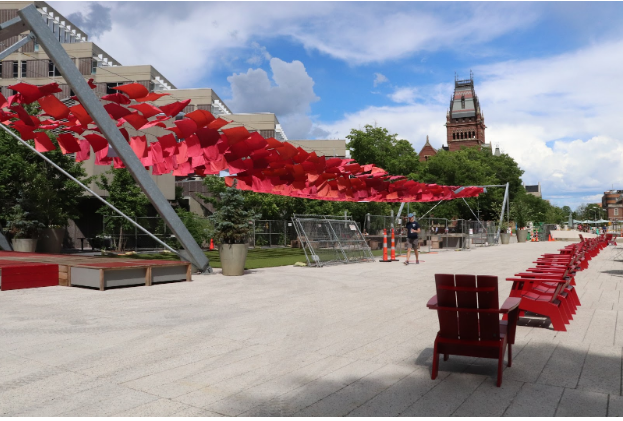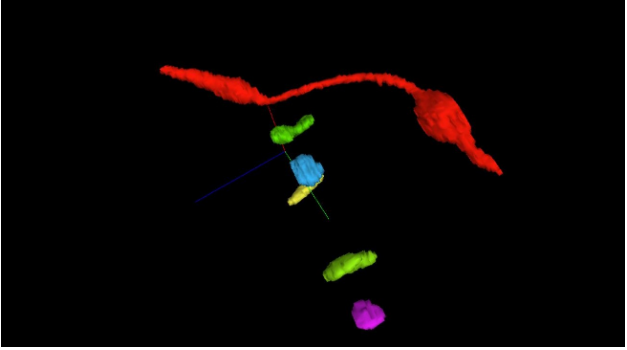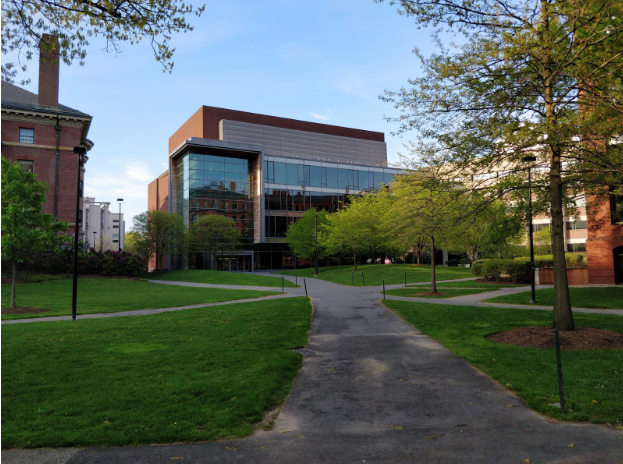

Body of IITR

TL; DR: I spent 11 weeks at Harvard as a part of my summer internship. I had a great time there and the internship would go a long way in helping me with my career. Below, I will try to summarize my experience there, as well as share how I landed the internship.
I worked on a couple of Deep Learning projects with professors at my department during my second year and a remote collaboration last summer. Consequently, I had a fair idea of what research constituted of and what I could expect from an academic internship. It gives you the freedom to choose a problem that interests you, try out your ideas and work at your own pace. There are deadlines, but they are scattered and more relaxed than what you would find in the corporate world. But most of the on-campus internships offer the role of a software developer. Therefore, I opted out of the on-campus internship season and applied for a research internship instead.
The most common method of applying for a research internship is by emailing professors. With a research paper from last summer’s project, I was pretty sure that I would get an internship easily. But that did not happen. I emailed around 15 professors (after going through their work and writing customized emails to each one of them) from around July till November but did not get a single reply. So, if you don’t get any replies, don’t be disheartened and keep trying. It is all a part of the process. Honestly, it also depends a lot on your luck. I have seen people getting an internship after their first email, and people who did not get any offer until near the end of the academic year.
I also started looking for other options on the way. I applied to Naver Labs, a South Korean AI industrial research lab, and got through. But I had a preference for an academic research internship instead, so I kept on applying to various research labs. I also applied to various internship programs such as Mitacs, Summer@EPFL, ISTernship Summer Program, etc. without any luck. I expected this because my CGPA was not up to the mark. Until March, I just had an industrial research internship offer. Shortly after that, I was shortlisted for the SN Bose Scholars Program. For those of you who don’t know, it is a scholarship program to support Indian students for an internship in the United States. The scholarship includes a stipend of $2500, airfare and health insurance. Out of around 1500 applications, only 50 get through in the end. Each department from the participating institutes nominates two students for the program. Applications without nominations are not accepted. Following the nomination, the applicants are required to fill in an online application, submit their CV, statement of purpose, research statement, and some supporting documents. Based on the applications, students are short-listed and are required to find a mentor in the United States. Having a mentor beforehand also works. The program organizers also help you to reach out to mentors from previous years. Once you get a mentor, the rest of the proceedings follow (getting the award and offer letters, the visa application, etc.). After being short-listed, I selected around 6 prospective mentors from different universities and shot them emails. I got a reply shortly from 4 of them asking to schedule an interview. I gave the interview for Harvard first and got through. What did they ask in the interview for Harvard? I just gave a presentation on my research paper and answered some related questions. That’s it! I also got an offer from the University of Southern California, where I was supposed to work on Natural Language Processing.
So, in the end, I had three internship offers, viz. from Naver Labs in South Korea, the University of Southern California, and Harvard University. Having a preference for academia, I chose Harvard over Naver Labs. Also, I was more inclined towards working in Computer Vision rather than Natural Language Processing and therefore, I went ahead with Harvard instead of USC.
In retrospect, I think that the SN Bose program lays more emphasis on the research profile of the applicants rather than their CGPA only. In my opinion, CGPA is actually not a good criterion for gauging someone’s research calibre. But that’s the way it is. A piece of advice, if you have a low CGPA, you are in for a tough fight. But you’ll get through :).

Harvard University is the oldest higher education institution in the United States. Situated in Cambridge, MA, it is an Ivy League college and has the highest annual endowment in the world for an educational institution (around $40 billion). It is famous for the business, law, medical and engineering schools as well for its notable alumni, including Barack Obama, Franklin Roosevelt, Mark Zuckerberg, Bill Gates, and Natalie Portman.
My internship was a part of the Connectomics project, broadly involving the segmentation and analysis of brain scans obtained by electron microscopy (EM). The overall objective is to develop 3D maps of connections in the human brain to help in neuroscience. How so? There are many diseases and disorders that are attributed to “wrong wiring” somewhere in the brain. With interactive models of neuron wirings, neuroscientists can better understand these diseases and possibly arrive at a cure. The project further aims to improve the understanding of how the human brain actually works, how memories are stored and so on.
Multiple research groups at Harvard have been working in collaboration on this project for about ten years now. The reason why it’s taking such a long time is the staggering amount of data associated with a single human brain. To give you an idea, it takes around 100 terabytes (roughly 100000 gigabytes) just to record all the connections in a salt grain-sized block of the brain! One of the tasks associated with this project is to detect mitochondria in neurons automatically. It turns out that mitochondria are very different in shape from what was taught to us in high school. Instead of the globular structure that you might remember from your high school biology textbook, mitochondria look something like this:

The conventional methods used for medical image segmentation fail for such non-convex morphologies. Another problem is that a large number of mitochondria are in contact with each other, making the problem more difficult. During my internship, I worked on developing and testing neural network architectures which take into account these priors and give better results than the standard methods.

The work environment at the lab is very accommodating. On paper, the interns are expected to work for around 40 hours a week. But that is flexible and largely depends on the amount of work on your hands. There are no specific timings to work, and the labs can be accessed anytime using a Harvard ID. People usually come in at around 10 in the morning, leave by around 5 or 6 in the evening and don’t work on weekends. Group meetings and lunches are held every week to catch up on work-related stuff or for chitchat. One thing that I really love about Harvard is that there are plenty of computing resources here. I could easily train multiple models at the same time, with each one being trained on 8 Graphical Processing Units (GPUs)!
Harvard has an exceptional research output and the people here work hard, no doubt. But they also take time out of their schedules for recreation and hobbies. There is a foosball table and a grand piano just outside my lab. I see people playing foosball or just trying out a new piece of music on the piano almost every day. There are a few people who play the piano really well, and it’s a delight to work with soothing tones playing in the background. The point is that they pursue their interests, be it academic or otherwise, passionately.
With MIT at a walking distance from Harvard, researchers from both the institutes collaborate regularly and students of one institute can attend courses at the other. Also, for the undergraduate program at Harvard (and at many other universities), students have three semesters to decide upon a major, unlike the universities in India where you have to choose a major at the time of admission. Both the institutes also allow students to take up multiple majors and minors (instead of one, as is the case at IITR) during their course of study. One of my friends at MIT is majoring in Physics and Philosophy, with minors in Maths and Music!
Boston, named after a small town in England, is a great city except for the erratic weather, which was a total bummer initially. It is a thriving port city with economic bases in finance, business services, biotechnology, and information technology. Thanks to multiple colleges and universities in the city, Boston has around 2000 start-ups. With a lot to explore, the weekends were usually packed. Various events, such as art walks, food festivals, and concerts, were organized from time to time. Other times, I would just hang out with some friends at MIT at one of its fraternities, Alpha Delta Phi, playing Cards Against Humanity. I also attended the orientation program organized for Bose and Khorana Scholars at the University of Chicago and visited New York recently.
Housing is expensive in Boston with the city having one of the highest costs of living in the United States. I rented an apartment with four other interns at Harvard from India, which eased things financially. The apartment was about 20 minutes away from the campus. I usually commuted by bus, which was quite convenient and affordable.
There is a wide variety of food to try out here. You can try out the local dishes such as the Boston Cream Pie and the New England Clam Chowder or experiment with other cuisines like Japanese, Korean, Thai, Lebanese, Mexican, etc. The Indian cuisine being on the spicier side, I initially found most of the food here rather bland. So, during the first month, we would cook Indian food almost daily at the apartment. Slowly, you get used to it and ease into the different cuisines.
Almost every department at Harvard has a cafeteria serving decent and affordable food. Each meal costs about 8 dollars. If you want to shell out a little more, you can go to nearby restaurants or cafes at Harvard Square, the historic centre of Cambridge. You can have pizza, burritos, waffles, gelato, burgers, salads, souvlaki, and whatnot. The list is endless. Although if you are a vegetarian, you might have to struggle a bit finding vegetarian options.
Getting a research internship is difficult but has its own perks. You meet a lot of new people from different countries, experience a new culture, and learn a lot of new things. If you work dedicatedly, you can expect a strong recommendation letter from your mentor (which is useful for higher studies and even for getting a job) and a publication depending on how your project progresses. In my opinion, it’s worth the extra effort. If you get a chance, I’d strongly recommend going for a foreign research internship at least once during your undergrad at IIT Roorkee.
Cheers!